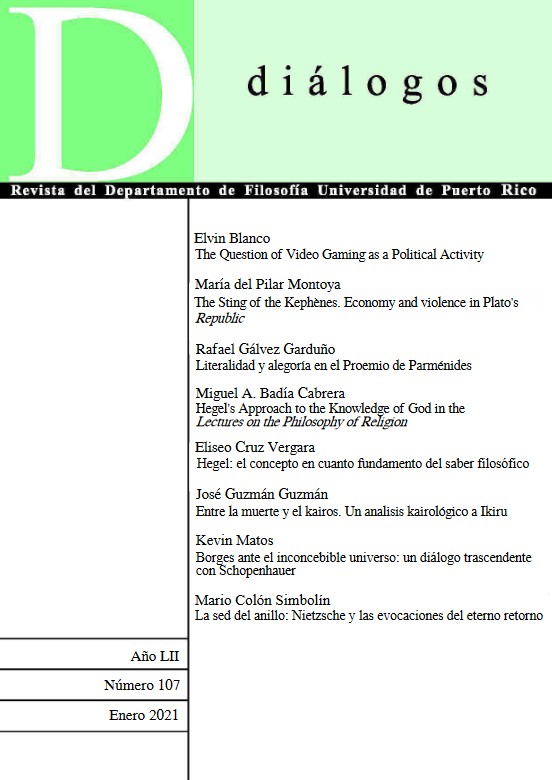Abstract
It is proposed here that the Parmenides Proem presents two readings: one literal and the other allegorical. We focus our attention on literal reading, including an exhaustive critique of Walter Burkert interpretation of it. On the other hand, an insinuating correction by Parmenides to the Hesiodic vision of the crossing of Night and Day in his Theogony(748-51) is made explicit, a suggestion that can be derived from a subtle relationship between B1.11 and B1. 13. It is then shown that the Parmenidean dwellings of the night (B1.9) are opposed to being identified with the Hesiodic ones of the Theogony, and from certain considerations it is inferred that the literal account narrates a dream of Parmenides. Next comes an analysis of the first five verses and what can be deduced from it, such as the identity of the very famous way of the deity. It is also presented how the katá pant‘ástereading (B1.3) may very well be the one that replaces the corrupt katá pant‘ate of the manuscripts. Lastly, when exposing the literal account of his youthful dream, he has arranged it with the necessary adaptations to be read also as an allegorical account that expresses the introduction to the philosophical discourse that follows.

This work is licensed under a Creative Commons Attribution-NonCommercial 4.0 International License.

